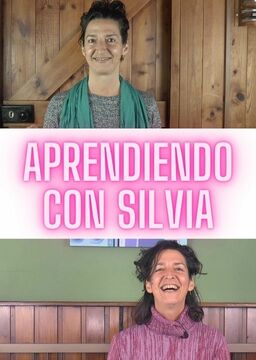









Difficulty:
 Beginner
Beginner
Spain
Maria continues to teach her students how to ask for directions, as well as to explain in detail how to get from one place to another.
Difficulty:
 Beginner
Beginner
Ecuador
Ana Carolina gives us seven useful tips for improving our pronunciation in Spanish.
Difficulty:
 Beginner
Beginner
Colombia
In addition to beginning his explanation regarding situations in which the past imperfect tense is commonly used in Spanish, Carlos explains to us how to conjugate regular -ar, -er and -ir verbs as well as sharing with us some of the most common irregular verbs and their imperfect conjugations.
Difficulty:
 Beginner
Beginner
Spain
Professor Maria creates a dialogue with her students so that they can practice how to explain where the school is, for example, in relation to other locations.
Difficulty:
 Beginner
Beginner
Spain
Professor Maria shows us how to get around and ask for directions in the city.
Difficulty:
 Beginner
Beginner
Spain
Maria explains prepositions that describe objects' locations in relation to one another, with examples that make learning easier for her students.
Difficulty:
 Beginner
Beginner
Colombia
Graciela teaches us how to make "carimañolas," which are delicious Colombian yucca fritters.
Difficulty:
 Beginner
Beginner
Colombia
Carlos explains to us, with examples, situations in which the present perfect tense should be employed.
Difficulty:
 Beginner
Beginner
Spain
Family relationships can be confusing in any language! Our instructor, María, sheds some light on how some of the terms for family members are expressed in Spanish and how these individuals are related to one another.
Difficulty:
 Beginner
Beginner
Spain
Spanish teacher Maria teaches us the names of the various family members in Spanish.
Difficulty:
 Beginner
Beginner
Spain
At her super-intensive Spanish course at El Aula Azul, Ivonne is greeted by Silvia, who explains to her a bit about the program for which she is in store.
Difficulty:
 Beginner
Beginner
Colombia
The present perfect tense in Spanish is used when an action in the past occurs within a time period that has not yet concluded. Carlos clearly explains how this compound verb tense is formed as well as giving us several examples.
Difficulty:
 Beginner
Beginner
Spain
This lesson focuses on negative feelings in Spanish.
Difficulty:
 Beginner
Beginner
Ecuador
Natalia explains to us about the four types of temperaments and how understanding your own can help you to best utilize your personal characteristics and interact with others.
Difficulty:
 Beginner
Beginner
Colombia
Carlos explains to us the range of meanings that the verb "tocar" can have in Spanish, depending upon the context.
Are you sure you want to delete this comment? You will not be able to recover it.